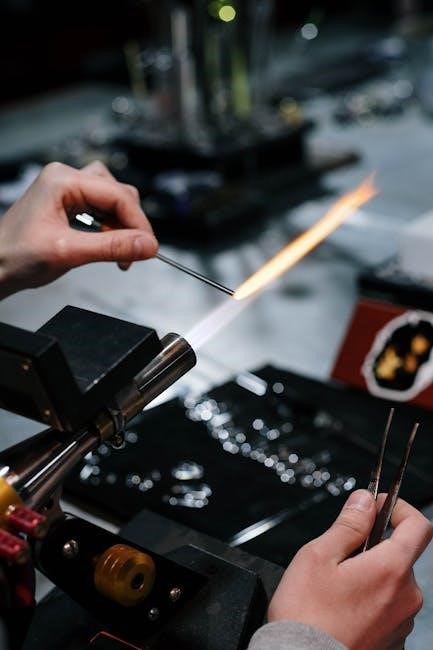tusy heat press manual
Welcome to the TUSY Heat Press Manual, your comprehensive guide to mastering this automatic heat press machine. Designed for ease of use, it helps you unlock its full potential, from basic setup to advanced techniques, ensuring professional-quality results for all your heat transfer projects.
1.1 Overview of the TUSY Heat Press Machine
The TUSY Heat Press Machine is a high-performance, automatic heat press designed for versatility and ease of use. Equipped with a powerful 1100W heating element and single-tube heating technology, it ensures even heat distribution and quick temperature adjustments. Its wide temperature range (0-464°F) makes it ideal for various materials, including fabrics, ceramics, and more. The machine features an intuitive digital control panel, allowing users to set precise time and temperature settings effortlessly. Perfect for both professionals and beginners, it simplifies the heat-pressing process while delivering professional-grade results.

1.2 Importance of Reading the Manual
Reading the TUSY Heat Press Manual is essential for safe and effective operation. It provides critical information on setup, temperature calibration, and troubleshooting, ensuring optimal performance. The manual guides users through proper safety precautions, reducing the risk of accidents. By understanding the machine’s features and maintenance requirements, users can extend its lifespan and avoid common issues. Whether you’re a novice or experienced, the manual empowers you to unlock the full potential of your TUSY Heat Press for professional-quality results.
Key Features of the TUSY Heat Press
- Automatic pressing function for effortless operation.
- High-power 1100W heating element for rapid heat distribution;
- Single-tube heating technology ensures even heat transfer.
- Wide temperature range of 0-464°F for diverse applications.
2.1 Automatic Pressing Function
The TUSY Heat Press features an automatic pressing function that simplifies the heat-transfer process. With a gentle push and the press of a button, the machine applies consistent pressure and heat evenly across the material. This eliminates the need for manual effort, ensuring professional-quality results. The automatic feature is designed to streamline operations, making it ideal for both beginners and experienced users. It also includes a beep notification when the cycle is complete, allowing for precise control and efficient workflow.
2.2 High-Power Heating Element (1100W)
The TUSY Heat Press is equipped with a powerful 1100W heating element, enabling rapid and even heat distribution. This high-power component ensures quick temperature adjustments and consistent heat delivery, making it ideal for various materials and applications. Designed to reach temperatures up to 464°F, the heating element supports sublimation, embroidery, and ink transfers efficiently. Its robust design ensures durability and reliable performance, making it a key feature for achieving professional-quality results in heat pressing projects.
2.3 Single-Tube Heating Technology
The TUSY Heat Press features a single-tube heating technology designed for efficient heat distribution. This innovative design ensures faster warming and consistent temperatures across the platen, eliminating hotspots. The single-tube system allows for precise control over heat delivery, making it ideal for various materials and applications. Its durable construction ensures long-lasting performance, while the even heating promotes professional-quality results in heat pressing projects, from fabrics to ceramics and more.
2.4 Wide Temperature Range (0-464°F)
The TUSY Heat Press offers a wide temperature range of 0-464°F, providing versatility for diverse heat transfer applications. This extensive range allows precise control for different materials, from delicate fabrics to high-temperature sublimation projects. The machine heats up quickly, reaching optimal temperatures for efficient pressing. This feature ensures compatibility with various transfer methods, including plastisol, ink transfers, and heat-activated embroidery, making it a reliable tool for both personal and professional use. The temperature range enhances flexibility and ensures consistent results across all projects.
Setting Up the TUSY Heat Press
Setting up the TUSY Heat Press involves unboxing, assembly, and initial calibration. Ensure proper placement on a stable surface and follow safety precautions for optimal performance and longevity.
3.1 Unboxing and Assembly
Begin by carefully unboxing the TUSY Heat Press and verifying all components are included. Minimal assembly is required, typically involving attaching the heat plate or other accessories. Follow the provided instructions to ensure proper installation. Place the machine on a stable, heat-resistant surface. Before first use, inspect all parts for damage and ensure they are securely fastened. This step ensures safety and optimal performance during operation.
3.2 Placement and Safety Precautions
Position the TUSY Heat Press on a flat, heat-resistant surface, away from flammable materials. Ensure adequate ventilation to prevent heat buildup. Keep children and pets at a safe distance. Avoid overloading electrical circuits. Always use protective gloves when handling hot surfaces. Never leave the machine unattended while in operation. Follow all safety guidelines to ensure a secure and efficient heat-pressing experience.
3.3 Initial Calibration Steps
Before first use, calibrate the TUSY Heat Press by setting the temperature to 380°F on the control panel. Allow the machine to heat up and stabilize. Press and hold the temperature adjustment button until the display shows “CAL.” Release and wait for the machine to reset. Ensure the heat press is level and the pressure is evenly distributed. Conduct a test press on scrap material to verify proper function and accuracy. Refer to the manual for detailed calibration instructions.

Operating the TUSY Heat Press
Turn on the machine, set the desired temperature, and adjust the pressing time using the control panel. Once settings are confirmed, press start to begin the cycle.
4.1 Turning On the Machine
To power on the TUSY Heat Press, ensure it is placed on a stable, heat-resistant surface and properly assembled. Plug the machine into a suitable power source. Press the power button located on the control panel. The digital display will illuminate, indicating the machine is ready for operation. Allow a few moments for the system to initialize before proceeding with temperature or time settings. Always ensure the machine is turned off when not in use to avoid overheating and maintain safety.
4.2 Setting the Temperature
Use the digital control panel to set the desired temperature by pressing the “+” or “-” buttons. The TUSY Heat Press offers a wide temperature range of 0°F to 464°F, ideal for various materials like fabrics, ceramics, and sublimation. Ensure the temperature matches your specific project requirements. Once set, the machine will begin heating. Always preheat the press before starting your project for even heat distribution. Refer to the manual for material-specific temperature guidelines to achieve optimal results.
4.3 Adjusting the Pressing Time
Adjust the pressing time using the digital control panel by pressing the “+” or “-” buttons. Set the desired time based on your project requirements, typically ranging from 30 seconds to several minutes. Once set, press the “SET” button to confirm. The machine will begin the countdown, and once completed, it will beep to signal the end of the pressing cycle. Always refer to the manual for specific time recommendations for different materials to ensure optimal results and durability of your transfers.
4.4 Starting the Pressing Cycle
Press the button on the control panel to initiate the pressing cycle. The machine will automatically apply pressure and heat to your material. Once the timer reaches zero, it will beep to signal completion. Carefully lift the pressing plate to avoid burns. Always follow the recommended time and temperature settings for your specific material to ensure professional-quality transfers.
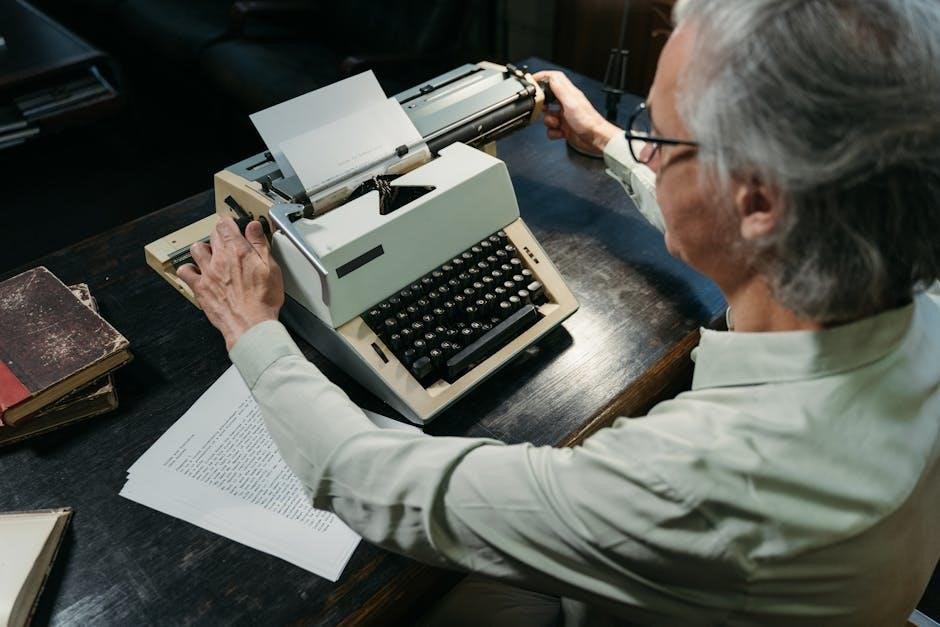
Using the TUSY Heat Press for Various Materials
The TUSY Heat Press is perfect for fabrics, ceramics, and plastics, offering precise control for diverse materials, ideal for both beginners and professionals.
5.1 Heat Transfer on Fabrics
The TUSY Heat Press excels at fabric heat transfers, ensuring vibrant, long-lasting designs. Its automatic pressing feature provides even pressure, while the wide temperature range (0-464°F) allows precise control for materials like cotton, polyester, and blends. Ideal for sublimation, ink transfers, and heat-activated embroidery, it delivers professional results. Use sublimation paper for ceramics or heat transfer paper for fabrics, ensuring designs are mirrored and correctly aligned. Proper temperature and time settings are crucial for optimal results, making it perfect for both beginners and experienced crafters.
5.2 Sublimation on Ceramics and Mugs
The TUSY Heat Press is ideal for sublimation on ceramics and mugs, offering precise temperature control and even heat distribution. Use sublimation paper wrapped tightly around the mug, secured with heat-resistant tape. The machine’s wide temperature range (0-464°F) ensures vibrant, durable designs. For best results, set the temperature between 380-400°F and press for 3-5 minutes. Ensure the mug is sublimation-coated, as regular ceramics won’t work. This feature makes the TUSY Heat Press perfect for creating customized gifts or personalized items with ease.
5.3 Heat-Activated Embroidery
Heat-activated embroidery is seamlessly achieved with the TUSY Heat Press. Its precise temperature control and even pressure ensure vibrant, durable designs. Perfect for professionals and hobbyists, the press simplifies applying heat-activated embroidery patches or transfers. Set the temperature between 300-320°F and press for 10-15 seconds. Use a heat-resistant mat to protect your work. This method is ideal for customizing fabrics, ensuring long-lasting, professional-grade embroidery results with minimal effort.
5.4 Plastisol and Ink Transfers
The TUSY Heat Press excels at plastisol and ink transfers, offering precise control for professional results. Set the temperature between 300-320°F for plastisol transfers, ensuring vibrant, long-lasting designs. For ink transfers, use heat-resistant tape to secure the paper. Press for 10-15 seconds, adjusting time based on material thickness. Ensure the transfer paper is not reversed to avoid mirror images. The machine’s even heat distribution and consistent pressure guarantee sharp, durable prints, making it ideal for custom apparel and promotional items.
Troubleshooting Common Issues
Address common issues like temperature calibration, uneven heat distribution, and malfunctioning features. Refer to error codes and solutions for guidance on resolving these problems effectively;
6.1 Temperature Calibration Problems
Temperature calibration issues are common, especially with new machines. The TUSY Heat Press may show inaccurate readings, often 18-20 degrees off. To fix this, set the machine to 380°F and allow it to stabilize. If problems persist, refer to the manual for calibration steps or contact TUSY support. Ensure correct temperature settings for specific materials to avoid transfer failures. Proper calibration is essential for consistent results and machine longevity.
6.2 Issues with Heat Distribution
Uneven heat distribution can affect transfer quality. Ensure the heating plate is clean and properly assembled. Check for blockages or debris. If issues persist, recalibrate the machine or consult the manual. Contact TUSY support for assistance. Proper maintenance ensures consistent heat delivery, crucial for professional results. Regularly inspect and clean the heat plate to prevent distribution problems. Adjust settings as needed for optimal performance across various materials.
6.3 Malfunctioning Automatic Pressing Feature
If the automatic pressing feature malfunctions, first ensure the machine is properly assembled and powered. Check for loose connections or blockages. Restart the machine and attempt a test cycle. If issues persist, consult the manual for calibration steps or reset procedures. Contact TUSY customer support for further assistance. Regular maintenance and proper usage can prevent such malfunctions, ensuring smooth operation and consistent results for your heat transfer projects.
6.4 Error Codes and Solutions
The TUSY Heat Press may display error codes like E1, E2, or E3, indicating issues such as temperature mismatches or sensor malfunctions. To resolve these, restart the machine, ensure proper calibration, and check for loose connections. For E1 (temperature error), verify the heating element and sensors are functioning correctly. For E2 (pressure issues), adjust the pressure knob or reset the automatic feature. Refer to the manual or contact TUSY support for detailed troubleshooting and solutions to restore optimal performance.
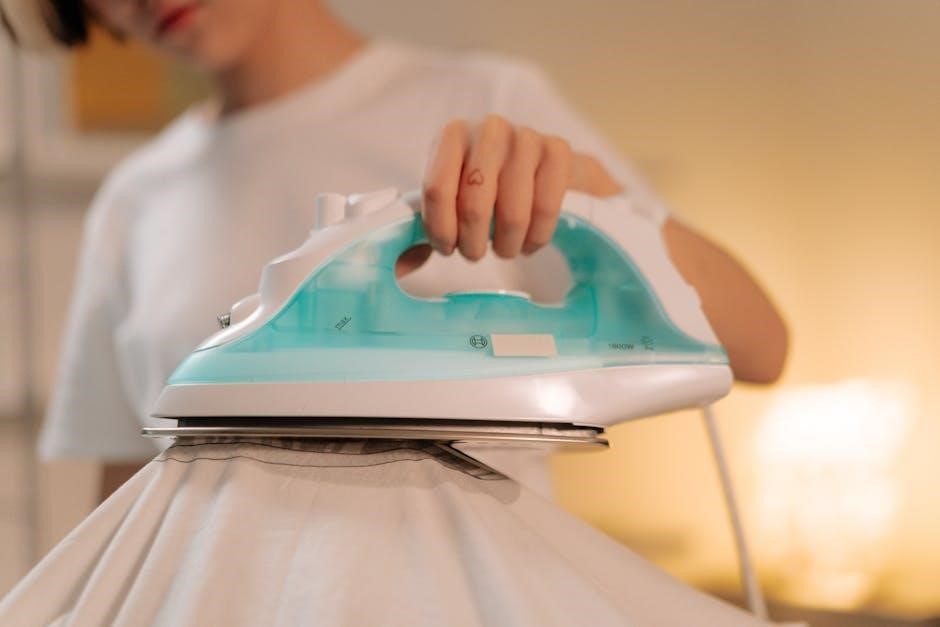
Maintenance and Care
Regularly clean the heat press with a soft cloth and avoid abrasive chemicals. Replace worn-out parts like mats and heat plates as needed. Store the machine in a dry, cool place to maintain optimal performance and longevity.
7.1 Cleaning the Heat Press
Regular cleaning ensures optimal performance and longevity of your TUSY Heat Press. Unplug the machine before cleaning to avoid accidents. Use a soft, dry cloth to wipe down surfaces, removing dust and debris. For stubborn stains, dampen the cloth slightly but avoid harsh chemicals. Clean the heat plate gently with a damp cloth, ensuring no moisture seeps into electrical components. Allow all parts to dry completely before storing or using the press again for safe and efficient operation.
7.2 Replacing Parts (Heat Plate, Mats)
To maintain your TUSY Heat Press, periodic part replacements may be necessary. Start by unplugging the machine and allowing it to cool completely. Remove the old heat plate or mat by unscrewing or lifting it, depending on the model. Install the new part securely, ensuring proper alignment. Refer to the TUSY Heat Press Manual for specific instructions, as some models may require additional tools. After replacement, test the machine at a low temperature to ensure proper function and even heat distribution.
7.3 Storing the Machine Properly
Proper storage of your TUSY Heat Press is essential to maintain its performance and longevity. Always unplug the machine and allow it to cool completely before storage. Clean the heat plate and mats to prevent residue buildup. Store the machine in a dry, stable environment, away from direct sunlight and moisture. Use a protective cover to shield it from dust. Avoid placing heavy objects on the heat press, as this could damage the heating elements or press mechanism. Ensure all accessories are stored separately in their original packaging to prevent loss or damage.
Safety Guidelines
Always operate the TUSY Heat Press with caution. Wear protective gloves, keep loose clothing tied back, and ensure the machine is placed on a stable surface. Avoid touching hot surfaces and keep children away. Regularly inspect cords and components for damage. Follow proper shutdown procedures and unplug the machine when not in use to prevent accidents and ensure safe operation.
8.1 Precautions During Operation
Always wear protective gloves and safety goggles when operating the TUSY Heat Press. Ensure the machine is placed on a stable, heat-resistant surface. Avoid wearing loose clothing that could get caught in the press. Keep children and pets away from the machine during operation. Never touch the heat plate or pressing surfaces with bare hands, as they can reach extremely high temperatures. Use heat-resistant tools to handle materials if necessary. Ensure proper ventilation in the workspace to avoid inhaling fumes from materials. Regularly inspect cords and components for damage to prevent electrical hazards. Always follow the recommended temperature and time settings for specific materials to avoid overheating or damage. Unplug the machine when not in use or during maintenance to ensure safety. Keep a fire extinguisher nearby as a precaution. By following these guidelines, you can ensure a safe and efficient heat-pressing experience.
8.2 Handling Hot Surfaces Safely
Always use heat-resistant gloves or tongs when handling hot surfaces or materials. Never touch the heat plate, pressing plate, or recently heated items with bare hands. Allow all surfaces to cool down completely before cleaning or performing maintenance. Use heat-resistant tools to lift or move items from the press; Keep a safe distance from the machine during operation to avoid accidental burns. Ensure the workspace is clear of flammable materials. Proper handling prevents injuries and ensures safe operation of the TUSY Heat Press.
8.3 Electrical Safety Tips
Always use the TUSY Heat Press with a grounded power source and avoid damaged cords. Keep the machine away from water and moisture to prevent electrical hazards. Never overload circuits with multiple high-power devices. Regularly inspect the power cord and plug for damage. Disconnect the machine when not in use or during maintenance. Ensure proper grounding to prevent electric shock. Follow all electrical safety guidelines in the manual to safeguard your workspace and ensure safe operation.

Advanced Techniques for Heat Pressing
Explore advanced techniques like multi-layer heat transfers and custom time-temperature settings to enhance your projects. Combine methods for intricate designs and precision results, maximizing your TUSY Heat Press’s capabilities.
9.1 Multi-Layer Heat Transfers
Mastering multi-layer heat transfers with the TUSY Heat Press allows for intricate designs and vibrant results. This technique involves layering heat transfer papers or vinyl to achieve complex images. Ensure proper alignment and use heat-resistant tape to secure layers. Start with the base layer, then add details, pressing each layer at the recommended temperature and time. Adjust pressure for even adhesion. This method is ideal for detailed graphics, logos, and custom artwork, making your projects stand out with professional-quality finishes.
9.2 Custom Time and Temperature Settings
Customizing time and temperature on the TUSY Heat Press ensures optimal results for various materials. Use the digital control panel to set precise temperatures (0-464°F) and pressing times. Adjust the dials or buttons to select your desired settings, then press “Set” to confirm. Calibration is crucial for accuracy, so refer to the manual for calibration steps. Experiment with different combinations to achieve the best outcomes for fabrics, ceramics, and other materials, ensuring professional-quality transfers every time.
9.3 Combining Different Transfer Methods
The TUSY Heat Press allows you to combine multiple transfer techniques, such as sublimation, plastisol, and heat-activated embroidery, for complex designs. Experiment with layering transfers or integrating different materials like fabrics, ceramics, and mugs. Use the digital control panel to adjust settings for each method, ensuring compatibility and optimal results. Proper preparation and alignment are key to achieving seamless combinations. This feature enhances creativity, making the TUSY Heat Press versatile for diverse projects and advanced customization needs.
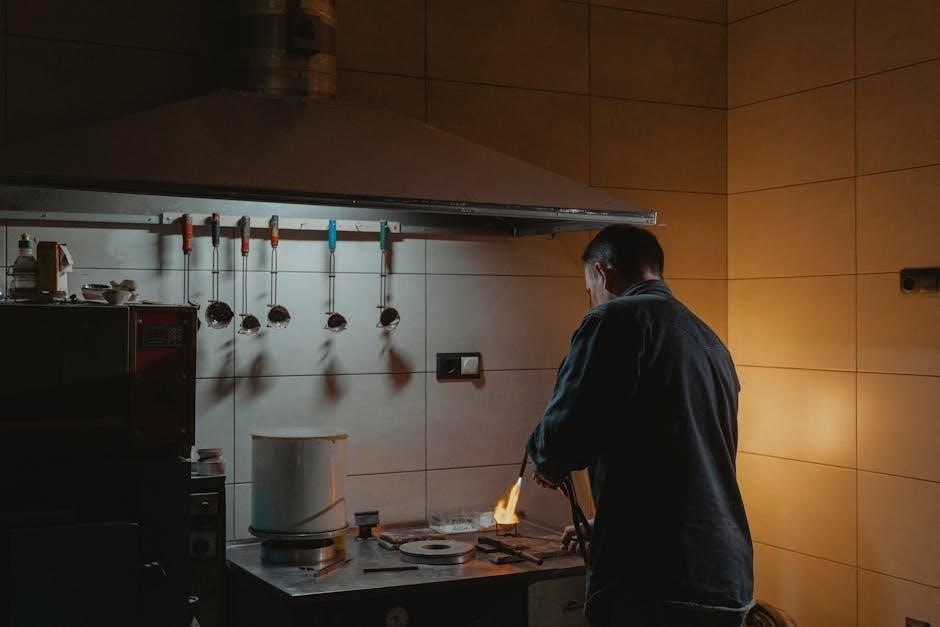
Customer Support and Warranty Information
This section covers TUSY’s dedicated customer support team, warranty details, and online resources for troubleshooting and maintenance. It ensures users have comprehensive assistance for their heat press needs.
10.1 Contacting TUSY Support
For any inquiries or issues, contact TUSY’s dedicated support team via email at support@tusy.com or through the contact form on their official website. The team is available Monday-Friday, 9 AM-5 PM EST, and typically responds within 24-48 hours. For urgent matters, phone support is also available during business hours. TUSY’s customer service is committed to providing quick and effective solutions, ensuring your heat press experience remains seamless and satisfactory. Visit their website for detailed contact information and support resources.
10.2 Understanding the Warranty
The TUSY Heat Press Machine comes with a one-year limited warranty covering manufacturing defects. This warranty ensures repairs or replacements for faulty parts within the specified period. To claim warranty benefits, contact TUSY support with proof of purchase and a detailed description of the issue. Improper use or maintenance may void the warranty. For more information, refer to the warranty terms provided in the manual or on the TUSY website. Keep your purchase receipt and documentation for warranty validation.
10.3 Online Resources and Community Help
TUSY offers extensive online resources, including detailed manuals, FAQs, and troubleshooting guides on their official website. Join the TUSY community forum for tips and support from experienced users. Follow their social media groups for updates, tutorials, and creative ideas. Additionally, video tutorials on platforms like YouTube provide step-by-step guidance for optimal use. Engage with the active community to resolve issues and refine your heat-pressing techniques, ensuring you get the most out of your TUSY Heat Press Machine.
The TUSY Heat Press Manual equips you with the knowledge to maximize your machine’s potential, ensuring precise and professional heat transfer results every time. Happy creating!
11.1 Summary of Key Features and Benefits
The TUSY Heat Press offers an automatic pressing function, 1100W high-power heating, and single-tube technology for even heat distribution. Its wide temperature range (0-464°F) suits various materials, from fabrics to ceramics. Designed for ease of use, it is ideal for both professionals and amateurs, enabling precise heat transfers with minimal effort. The machine supports multiple transfer methods, including sublimation and heat-activated embroidery, making it a versatile tool for creative projects and professional applications alike.
11.2 Final Tips for Optimal Performance
For optimal results, ensure regular calibration of the temperature settings and clean the heat press mat after each use. Use high-quality transfer materials and position designs precisely on the heating plate. Always refer to the recommended temperature and time guidelines for specific materials. Store the machine in a dry, cool place when not in use. By following these tips, you’ll extend the machine’s lifespan and achieve consistent, professional-grade transfers every time.
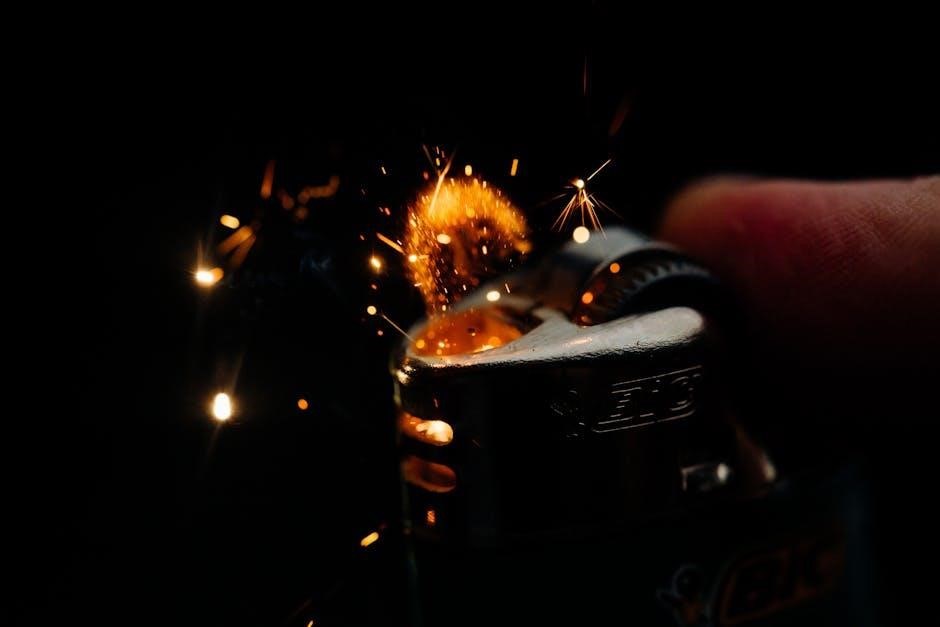
Additional Resources
Explore additional resources for your TUSY Heat Press, including official manuals, recommended accessories, and online communities for troubleshooting and creative inspiration. Visit the TUSY website for detailed guides and support materials.
12.1 Recommended Accessories
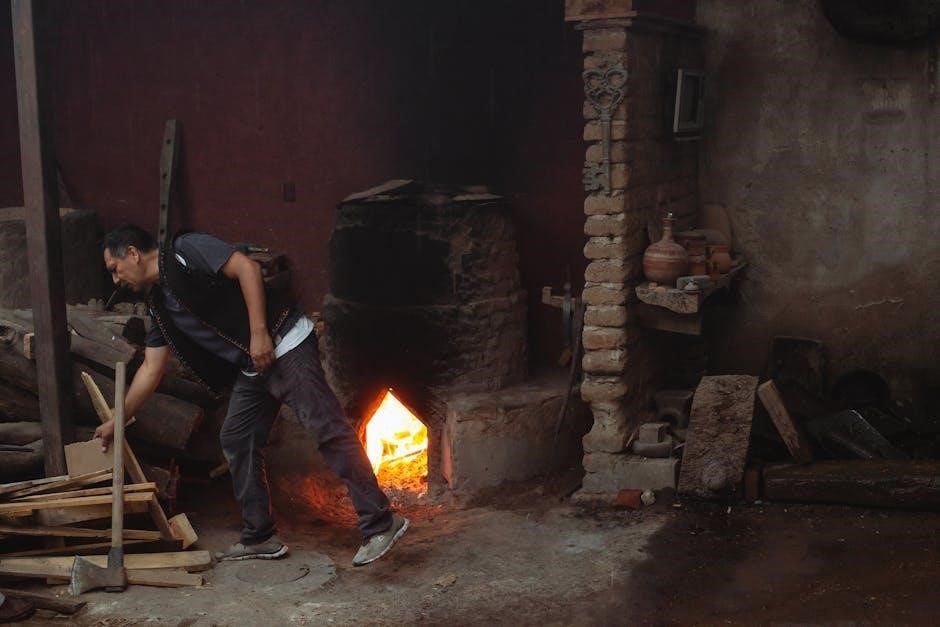
To enhance your heat-pressing experience, consider these recommended accessories:
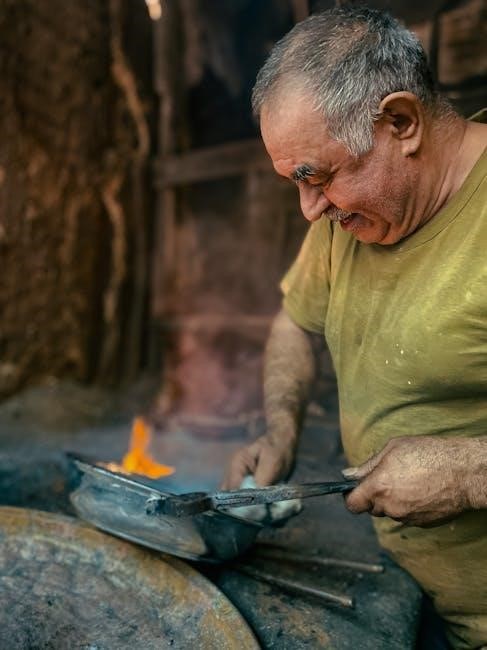
- Heat-resistant tape for securing transfer paper on curved items like mugs.
- Sublimation paper for high-quality transfers on fabrics and ceramics.
- A paper cutter for precise trimming of transfer designs.
- Thermal insulation pads to protect your work surface.
- Silicone mats for even heat distribution and safety.
These tools are available on the TUSY website or at craft supply stores, ensuring optimal performance and safety during your projects.
12.2 Suggested Reading for Advanced Users
For advanced users seeking deeper insights, explore these resources:
- Books on heat pressing techniques for complex materials and designs.
- Guides on multi-layer transfers and custom sublimation methods.
- Articles on optimizing temperature and time settings for specific materials.
- Online forums and communities sharing expert tips and troubleshooting solutions.
- TUSY’s advanced user blog for updates and creative project ideas.
These resources will help you refine your skills and explore new creative possibilities with your TUSY Heat Press.

